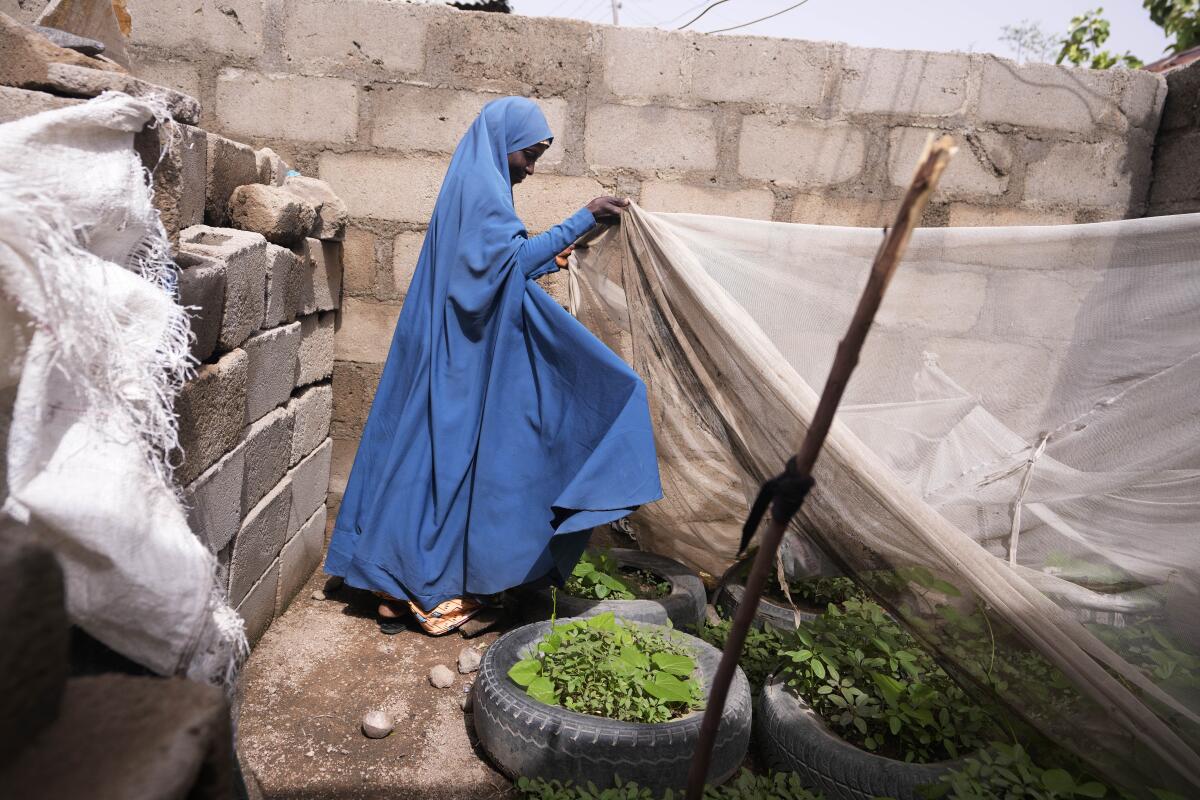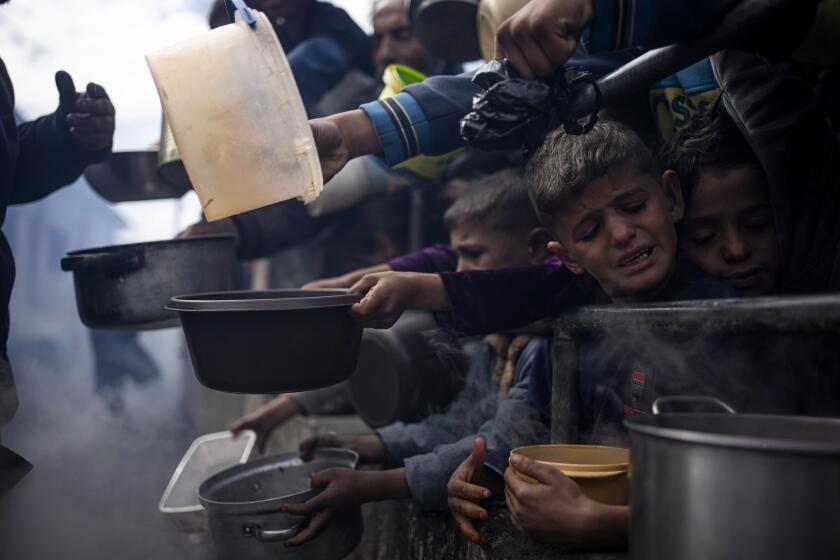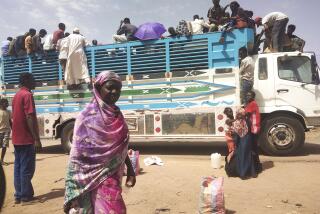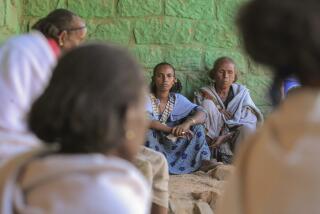A quarter of the world’s children under 5 suffer from severe food poverty, the U.N. says.

KALTUNGO, Nigeria — The 9-month-old twins cried nonstop and tugged at their mother, seeking attention but also food. They had received little in the last 24 hours, and there were signs of deeper hunger in the heads too big for their tiny bodies.
“Not much milk comes out,” said their 38-year-old mother, Dorcas Simon, who struggles to breastfeed and has three other children. She laughed, as if to conceal the pain. “What will I give them when I don’t have food myself?”
Here in northern Nigeria, where conflict and climate change have long contributed to the problem, her twins are among 181 million children under 5 — or 27% of the world’s youngest children — who live in severe food poverty, according to a new report Thursday by the United Nations Children’s Fund.
The report, which focused on nearly 100 low- and middle-income countries, defines severe food poverty as consuming nothing in a day or, at best, two out of eight food groups the agency recognizes.
Africa’s population of more than 1.3 billion people is one of the most affected mainly due to conflict, climate crises and rising food prices. The continent accounts for one-third of the global burden and 13 of the 20 most affected countries.
But it has also recorded some progress, the report said.
The percentage of children living in severe food poverty in West and Central Africa fell from 42% to 32% over the last decade, it said, noting advances including diversified crops and performance-based incentives for health workers.
A new United Nations report estimates that 19% of the food produced around the world went to waste in 2022.
In the absence of vital nutrients, children living with “extremely poor” diets are more likely to experience wasting, a life-threatening form of malnutrition, the agency known as UNICEF said.
“When wasting becomes very severe, they are 12 times more likely to die,” Harriet Torlesse, one of the report’s authors, told the Associated Press.
In several Nigerian communities like Kaltungo in the northeast where Simon lives, UNICEF is training thousands of women in how to boost their families’ nutrient intake with cassava, sweet potato, maize, millet and vegetables grown in gardens at home, and how to rear livestock and chickens.
More than a dozen women gathered this week in Kaltungo’s Poshereng village to learn recipes they can prepare with those foods, which, in the absence of rain, are grown in sand-filled sacks that require little water.
Mothers in Nigeria also face the country’s worst cost of living crisis. Growing food at home saves money.
Aisha Aliyu, a 36-year-old mother of five, said her latest child “used to be skinny but is growing fatter” because of what they now grow at home. Hauwa Bwami, a 50-year-old mother of five, nearly lost her grandchild to kwashiorkor, a disease caused by severe protein malnutrition, before the UNICEF training started a year ago. Now she grows enough food that she sells to other women.
Kaltungo is in a semiarid agricultural region where climate change has limited rainfall in recent years. Some children have died of acute malnutrition in the past because food is scarce, said Ladi Abdullahi, who trains the women.
A new report says nearly 282 million people in 59 countries suffered from acute hunger in 2023, with war-torn Gaza hosting the largest number.
The training “is like answered prayers for me,” Simon said in her first time with the group.
But it can be a painful lesson. Another trainee, Florence Victor, 59, watched helplessly as her 9-month-old grandchild succumbed to malnutrition in 2022.
Malnutrition also can weaken the immune system over time, leaving children vulnerable to diseases that can kill.
In the Sahel, the semiarid region south of the Sahara Desert that is a hot spot for violent extremism, there has been an increase in acute malnutrition — worse than severe food poverty — that has reached emergency levels, said Alfred Ejem, senior food security advisor with the Mercy Corps aid group in Africa.
Because of displacement and climate change, families have resorted to “bad coping mechanisms like eating leaves and locusts just to survive,” Ejem said.
In conflict-hit Sudan, children are dying of severe malnutrition in large numbers.
In Nigeria’s troubled northwest, the French medical organization Doctors Without Borders said at least 850 children died last year within 24 to 48 hours of being admitted to its health facilities.
“We are resorting to treating patients on mattresses on the floor because our facilities are full,” said Simba Tirima, the group’s Nigeria representative.
Many malnourished children in the region never make it to a hospital because they live in remote areas or their families cannot afford care.
Inequality also plays a role in severe food poverty among children in Africa, the new report said. In South Africa, the most unequal country in the world, roughly 1 in 4 children are affected by severe food poverty even though it is the continent’s most developed nation.
Governments and partners must act urgently, author Torlesse said: “The work starts now.”
Asadu writes for the Associated Press.
More to Read
Sign up for Essential California
The most important California stories and recommendations in your inbox every morning.
You may occasionally receive promotional content from the Los Angeles Times.












